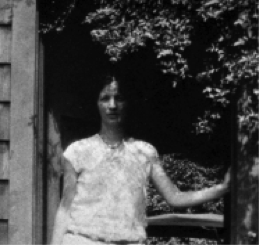 Louise Bogan has been called by some critics the most accomplished woman poet of the twentieth century and one of the finest lyric poets America has produced.
Louise Bogan has been called by some critics the most accomplished woman poet of the twentieth century and one of the finest lyric poets America has produced.
She was born in 1987 as Louise Marie Bogan to her parents who lived in Livermore Falls, MA in the United States. She was the product of a troubled marriage between her mother, Mary Helen Murphy Shields and Daniel Joseph Bogan. Her mother’s affairs would haunt Louise throughout her life.
Educated at Boston Girls’ Latin School then at Boston University (albeit for just the one year – 1915 to 1916) she had already started reading and writing poetry. Eschewing the fashionable literary modernism of the time Bogan set about mastering the art of rhyme and metre. She later described her poetic awakening where, during visit to her mother who was in the hospital, she saw a container of brightly coloured marigolds in the room.

She put contrast and design as the focus of her poetry and this early style did not change throughout her career.
After leaving university she fell for Curt Alexander, a US army corporal, and married him but it was a short-lived, unhappy marriage, ending in 1918. They had a daughter, Maidie Alexander, who she had to support alone when her husband died in 1920. Bogan moved then to pursue a writing career in New York, where she met Edmund Wilson and he was her first real mentor. He encouraged her to start writing literature reviews for periodicals and she found it to be a useful income for the young lady.
Her first book of poems, which was called Body of This Death, was published in 1923. In this, she wrote of love, grief and betrayal. The lyrics were short and formal, echoing the battle with depression for which she was meeting with a psychiatrist and which continued to assail her throughout her life. Nonetheless in 1925 she married again, to writer and poet Raymond Holden. However the marriage, just as the first, was troubled, ending in divorce in 1937. Despite this Bogan had very productive years, publishing her second book in 1929, Dark Summer Poems and a further collection in 1937 which she titled The Sleeping Fury. There followed other books which were mostly her older work along with a few new poems. She found the process of writing poems difficult and new work was produced sparingly. The words of her poem Women illustrates her style and highlights the angst which she often felt the need to express:

The 1930s saw Bogan hired as a poetry editor at the famous New Yorker, a post which she enjoyed for 38 years. Some of her reviews have been published in A Poet’s Alphabet; Reflections on the Literary Art and Vocation. W H Auden, the poet believed she was the finest poetry critic in America.
As the difficulty of writing increased for Bogan, she turned her talent to education, preferring to influence young people through teaching and working with younger writers. She continued to write critical reviews and in 1951 was asked to write a potted history of US poetry, which was in 1951. With undue modesty she omitted to mention herself in this.
Louise Bogan died of a heart attack in New York City on 4th February 1970. There were several autobiographical works published after her death. Some of her papers are held in the Archives and Special Collections at Amherst College.

